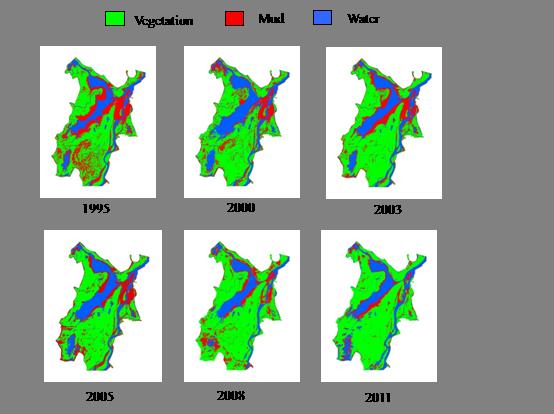The Three Gorges Dam Affects Eco-hydrological Environment and Vegetation Distribution of East Dongting Lake
Dongting Lake, the second largest freshwater lake in China, located at the south bank of the middle reach of the Yangtze River. In recent years, freshwater lakes have been considerably modified and degraded by human activities, Dongting Lake is no exception. The Three Gorges Dam(TGD) is a hydroelectric dam that spans the Yangtze River, whose implementation more or less affects eco-hydrological environment and vegetation distribution of East Dongting Lake.
A research team led by XIE Yonghong, from the Institute of Subtropical Agriculture, Chinese Academy of Sciences (ISA), evaluated the changes of eco-hydrological environment and vegetation cover area in East Dongting Lake after the implementation of the TGD and to identify the relationship between water level and vegetation area.
Scientists compared the daily water-level data, six periods of TM/ETM+ data and a digital elevation model, the eco-hydrological environments and vegetation area of East Dongting Lake from the years 1995–2011 before and after the implementation of the Three Gorges Dam (TGD) in 2003. Through study, they found that from 1995 to 2011, vegetation area increased by 211 km2, which indicated that vegetation has colonized areas of mud beach or water during the last 16 years; Also, the rate of vegetation expansion increased significantly and the minimum elevation of VCA decreased significantly faster after the implementation of the TGD. These data showed that monthly water level decreased considerably from June to November (the growing season for the complete biota), and annual submergence duration at elevations of 22–26 and 30m was drastically decreased, indicating that vegetation at 22–26m would be significantly changed. Since the drastic changes in eco-hydrological environments such as the decreasing water level and the minimum elevation of VCA, vegetation colonized the non-vegetation area (including mud beach or water body) more quickly after the implementation of the TGD,.(see Fig.1)
Scientists believed that the changes in hydrological regime will certainly influence the vegetation distribution and human activity in the Dongting Lake wetlands.
This study was supported by the National Key Technology Research and Development Program of China (2014BAC09B03), the National Basic Research Program of China (2012CB417000) and the National Natural Science Foundation of China (31170342).
Details can be found at: http://onlinelibrary.wiley.com/doi/10.1002/eco.1543/abstract

Fig 1.Area changes in vegetation, mud beach and water body in East Dongting Lake
Download attachments: